Q2 earnings reports are ramping up and it’s clear some companies are having very positive numbers for a couple of big reasons. One is their products and services were a perfect fit to meet the needs of customers during the COVID-19 crisis. The other is they’re digital or e-commerce companies that moved quickly to adjust their strategy, services and products, and marketing channels to a fully digital business model.
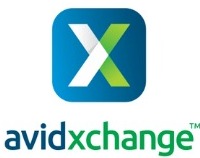
We had a chance to talk recently with Denise LeLeux, Senior Vice President of Supplier Services at AvidXchange, a leader in AP automation with a mission to transform the way companies pay their bills and handle the growing paperwork and demands on company resources.
Headquartered in Charlotte, NC, AvidXchange is one of the new breed of technology firms growing quickly from its southern US base. We started our conversation with the impact of COVID-19 on her company and how Leleux and her team have coped like many businesses with the realities of work from home (WFH), the new normal for employees and customers, and how AvidXchange’s payments business and customers have been impacted by the pandemic.
Jeff Domansky: What’s happened to AvidXchange during the first six months of the year from a business point of view?

Denise Leleux: I think COVID has actually accelerated adoption [of digital tools]. Even for us, I have a team of about 400 people who support getting customers to adopt e-payments or make payments for those we haven’t automated already. Moving everybody over a weekend back to their homes with equipment, I mean the whole world did that and so in the first couple of weeks, of course, it was lower contact rates, people getting adjusted and acclimated.
But not only has that rebounded, it’s gone absolutely gangbusters with people looking to adopt automated accounts payable solutions all the way from PO and invoicing to payments and reconciliations. I think people realized the importance of their disaster recovery plans, business continuity, fraud risk, and finance departments understood the need to keep payments flowing in and out.
One of the big things we’ve always seen, where we lose business most is against the “status quo.” People go “I really like my process, I’m old-school and I like signing my checks on a Thursday.” COVID has really started to help change that, not only with more millennials in these jobs but with COVID I can’t sign checks in the office anymore. I really do need to find a new solution for my company.
It’s been a wholesale change and just the challenge you describe of having your whole team of 400 suddenly work from home and its impact on productivity is a new reality for most businesses. But after that first adjustment, productivity seems to rebound enormously? It’s always hard to understand why there are sometimes such big barriers to automation.
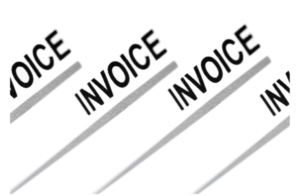
Status quo, fear of change, or maybe they’ve tried it in the past or have heard horror stories. Once you hear the solution and understand it can actually save money and time, be more efficient, and let companies reinvest those resources into what got you into the business in the first place, it’s a winning combination when we talk to our customers.
What are the biggest barriers? Is it the technology, the old-school, I don’t have the people, or the skills, or the cost? Where do people get stuck most of the time when it comes to automation?
Most of the time, it’s “This is the way we do things.” And maybe a bit of a stretch, but if you think about where do companies invest? They don’t typically invest in new technology for back-office operations like accounts payable and accounts receivable. Typically, they’re investing in their own products and services and how to further automate their own unit costs. I think it’s just been a hungry area and I think COVID has finally shed some light for our finance partners in the world and CFOs.
We did a study talking to CFOs and finance leaders and something like 66% of financial executives have higher levels of stress because they don’t know how to get payments in and out of the system faster and 78% of those also said new technology or automation would help reduce their stress. And out of that comes innovation.
So, the table is set. What can companies typically expect in terms of ROI from AP automation? I know it varies by industry and company but what’s your experience? What’s the number you aim for or companies should hope for?
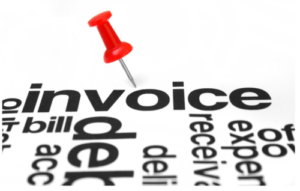
We think about it in lots of different ways. We look at things like decreases in processing time. How do you get people mobilized doing other tasks and jobs, or reinvesting that resource into innovating for your company? We’ve seen an average 73% decrease in processing time and then cutting that invoice processing time down from 10 days to three days because you can just send it directly to us. It can be automated, and you don’t have to mail it anymore.
As a result, it’s quicker to get paid for the supplier; it keeps your cash flow going. We also look at the cost per invoice which can come down 60% using our automation as well as just the increase in control. A customer might think I can write a check and still control things, but you have fraudsters, spammers, and all kinds of things that now are more transparent with 24 X 7 visibility into your invoices and where your payments are.
Just the sheer delay in terms of handling paper, all that simply stopped with COVID. The savings on that alone are substantial.
Just think about that. With everybody I sent home, and for other businesses, the music stops! The payments, they had to figure out how to get back into their offices, how to collect those checks, how are you going to process those, how do you reconcile? I think again there is an “aha” moment on both sides of the equation – the buyer and supplier. There are benefits and people are like – wait, I can reduce all of this, with more security, and more control? And I can get back on the road, and invest those quicker funds on the next job.
Typically, what are some examples of typical cost savings?
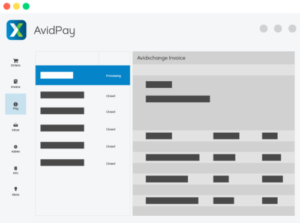
We’re in the middle market, but we just announced recently that we have now more than 680,000 suppliers in our network and over 300,000 of those take e-payments, a virtual card, or an AvidPay Direct product. If you think about that, they range from paying Staples or Home Depot to paying the local landscaper. On our supplier side, we actually do run the gamut from enterprise to very small business. So it’s really exciting for us to think about.
Where we think we play uniquely is this supplier network and that flywheel of providing amazing service to our suppliers so either they might want to become our buyer customer or they would over time recommend us to their other buyers because we’re a great way to get paid.
What’s happened in the first six months of 2020 with AvidXchange, your client growth, and revenue growth?
We’re a private company but I can tell you that our supplier network has gone from just over 500,000 to more than 680,000 suppliers in the past year. Our enhanced ACA option called AvidPay Direct has seen a 30% jump in May and June of this year alone. We know people are looking for automated solutions or how to get paid.
The other thing in terms of total payments, this will give you a good sense of how we’re growing. In 2018, we processed 9.5 million payments worth about $120 billion in transaction value. In 2019, we processed 12 million payments with a value of $140 billion.
Even despite COVID, we’ve had some exciting additions to our network including Island Hospitality, First Service Residential, and Panera Bread. Lots of companies looking for ways to automate their back-office.
What’s on the horizon for the payments industry and AvidXchange when it comes to automation, innovations, and trends?
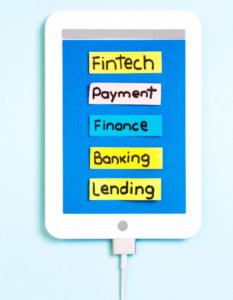
There are a few things that are near and dear to my heart and that my team is working on now. One of the things is “straight-through” processing, I think about it as payments that are “zero-touch.” I want the invoice to come in as an electronic invoice, to get scanned automatically into the system, have the buyer approve it, and it magically appears in the bank account of the supplier. All frictionless.
We’re working on straight-through processing, direct connect, how do you automate? Our goal by the end of 2021 is to have 70% to 85% of all invoices or payments without human intervention. We’re well on our way to that number already. That’s our goal.
The other thing, we won an award last year on real-time payments. We have bank partners, we partnered with Fifth Third, and we developed a solution where we scan the invoice, look for early pay discounts, and then put that in front of the buyer so that the buyer can take advantage of that if they want to. Put it at the top of the queue if you will. We haven’t launched it yet, but we did a beta of it to win the contest.
We’re trying to think of new B2B real-time payment solutions. I think the easier ones that come to mind are on the consumer side, but we’re trying to evaluate how we can play in real-time payments. And of course, artificial intelligence is on the table as well as ways you can be more valuable to the customer.
Any other innovations on the horizon that intrigue you?

I think everybody’s got their eye on blockchain and what does it mean? My vision for suppliers is to try and help them understand the value of electronic payments, electronic reconciliation, zero-touch, and what value proposition and what technology we need in order to deliver the highest value for our customers.
I like to start with what’s the problem we’re trying to solve with our customers and then back into the target, the value proposition, the customer experience, and how do you create all of those in an amazing package for them.
How can we avoid overloading those companies that aren’t early adopters? Who don’t have the technology resources to implement automation easily? It must be a big challenge to get the product designed simply enough to be quickly and easily onboarded?
Simple. Frictionless. We, the technology companies, should do the heavy lifting. We’re in business to make our customer’s life easier. We need to keep that at the forefront and solve problems. I hope that’s part of our success so far and part of our core values.
Another challenge in the short term is to extend that to reach many of those working from home all across America.
[Editor’s Addition]
Highlights of AvidXchange survey of financial executives
During our interview, Leleux mentioned AvidXchange’s survey of 500 senior financial executives and how they’re holding up during COVID-19 and what technologies could make their professional lives less stressful. We include several highlights:

- COVID is stressful: 28% felt significantly more stress; 38% felt a little more stressful
- Since the start of COVID-19 (Mar 15) have you experienced: canceled vacations (38%), longer work hours (26%), sleep loss from work stress (21%), sleep interrupted by work calls or emails (14%), none of these (6%)
- How many new tech solutions added in wake of COVI-19: 2-3 new solutions (36%), one (26%), none (26%), four+ (12%)
- 84% believe new technologies will make them more efficient during and post-COVID.
You can read more AvidXchange survey highlights here.
Cover photo by Nicolas Postiglioni








LET’S CONNECT